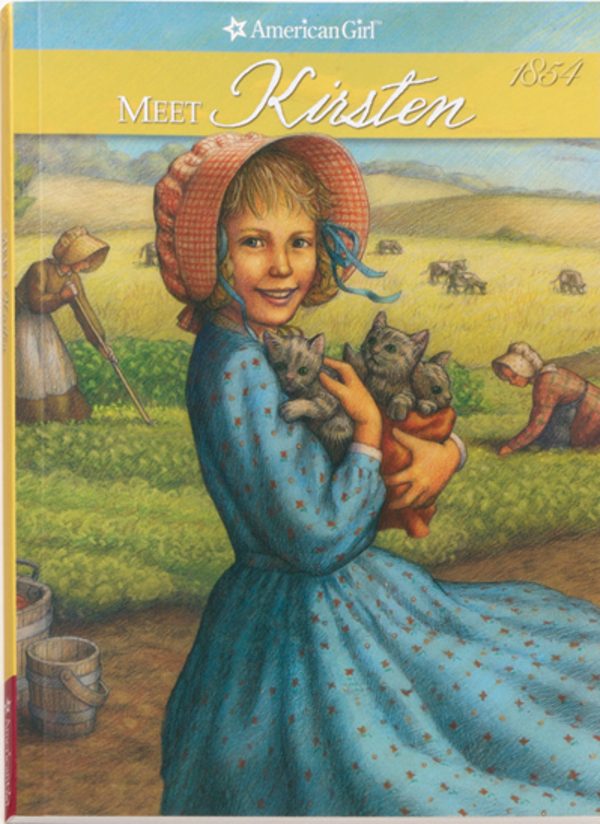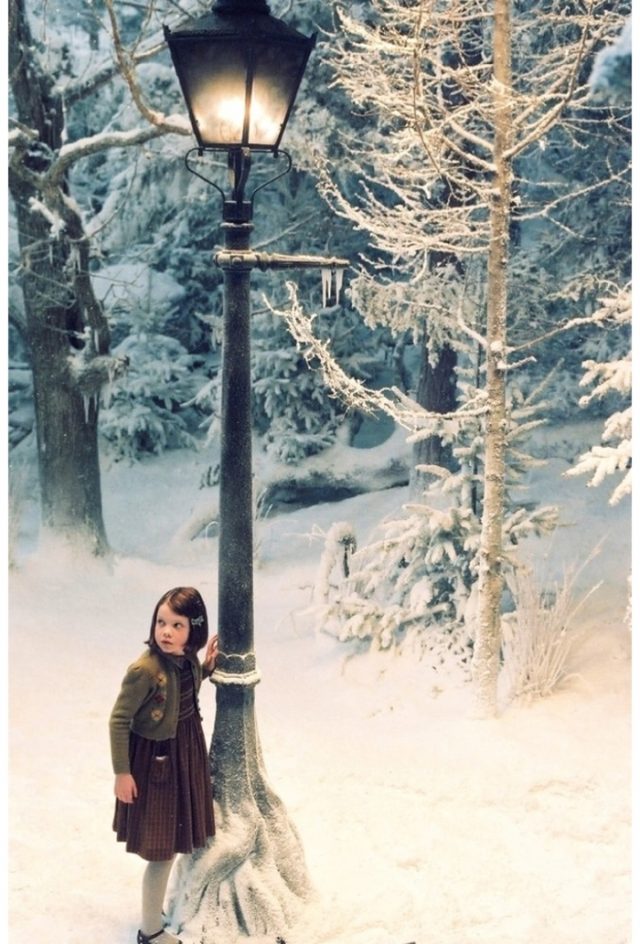My venture into American Girl was, I imagine, pretty similar to many other girls my age at the time. I wanted a doll that, I’m almost ashamed to say, looked like me. I played with Barbies like most childen, but I couldn’t relate to any of them. Who could, with modelesque figures, flawless features, and hair that did pretty much what you asked of it? (I’ll admit I cut a lot of my Barbies’ hair. It creeped me out that they all looked the same.)
I wanted a doll that was an individual. And since I was nowhere near as awesome as this kid who told off a cashier for recommending a doll with a different, matching skin tone, I wanted one that, again, looked like me.
My understanding of what American Girl was doing with their dolls was limited at the time, but I now see that what they had started was groundbreaking. It wasn’t perfect, as the majority of their Historical Characters are white and there are still races that aren’t represented in their line. (Pretty much Asia and the Middle East in general.) But American Girl began to make many different girls’ dreams to be represented a reality, and they didn’t stop there. They told fictionalized accounts that showed what being an American Girl – of different backgrounds and races – in varying eras was like. Not only were the books one heck of a history lesson, they also showed that girls, no matter the time and era, have a lot in common. And of course, have differences that should also be celebrated. This makes American Girl truly timeless.
Here are a few examples.
1. Meet Kaya
Kaya’aton’my (She Who Arranges Rocks) is a Native American girl living in the Nimiipuu tribe in 1755. Called Kaya for short, she was also given the nickname ‘Magpie’ for being so rash and reckless. (She wanted desperately to get rid of that name.) All the dolls and pictures of Kaya show her with a closed smile, because it was taboo in Nimiipuu to show teeth. Most importantly, Kaya is marketed as the First American Girl, which is a proper acknowledgement that Native Americans were here long before European settlers.
Despite taking place centuries ago, Kaya still manages to be extremely relatable. She is outdoorsy and loves animals, particularly horses, and she listens to her grandmother’s stories. She is close with her sister Speaking Rain. Kaya is so headstrong that she often acts before she thinks, which causes many of the problems in the stories. It takes her a while to realize that her actions do affect other people.
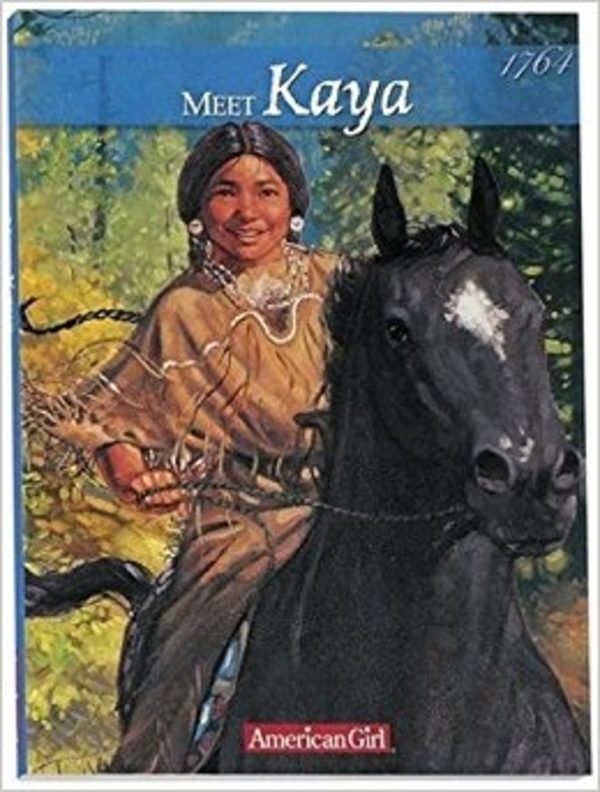
Source: Amazon
2. Meet Felicity
Felicity Merriman is a young girl living in pre-America during the Revolutionary War. She lives in an era where poise and “learning to be a lady” is what’s most important for girls her age. She is expected to attend balls and serve tea, and tend to her domestic duties.
Naturally, this is everything Felicity isn’t. Her mother often calls Felicity ‘flighty’ and ‘thoughtless,’ and it is no secret she doesn’t fit in with this particular society. She often messes her chores, hates cooking, sewing, and other feminine duties, and fights for what she wants rather than just accepting what she is given. In an iconic scene, she refuses tea to protest British imperialism. Felicity tells a story of being born in the wrong time, but manages to learn to fit in with society and be true to who she is at the same time.
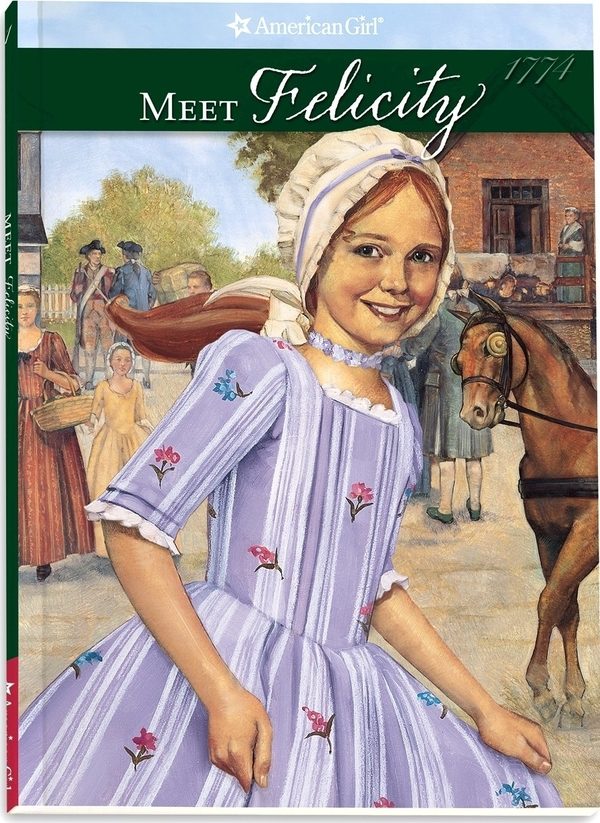
Source: Amazon
3. Meet Josephina
Josefina Montoya is a Mexican girl living on a rancho near Santa Fe, when the area was still under Mexican Rule. Mexico had just gained its independence. The books unsurprisingly spends a lot of time on family, as Mexican culture puts a great deal of emphasis on family and the relationships therein. Her mother died a year before the series starts, and the books show how the family copes such a loss. (Her father ends up marrying her aunt, which isn’t as weird for Mexico in the 1820s until now.)
Josefina herself is very quiet, timid, and kind. She has an artistic side that shows when she first hears her godmother play the piano. She collects things, especially trinkets that remind her of her mother, and shows this gentle and loving side to others as well. She is positive and loyal, and never gives up. Her priority is her family, always.
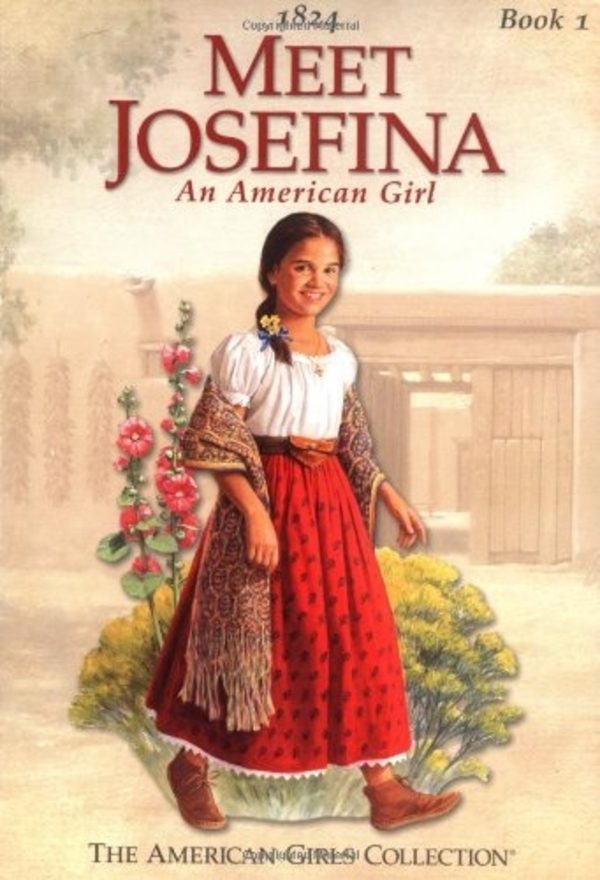
Source: Amazon
4. Meet Kirsten
Many Americans today are descended from girls like Kirsten Larson. Kirsten was actually born in Sweden, but immigrated to America in the 1940s. The book deals with how immigrants are uprooted from their lives and have to create entirely new ones. Kirsten’s best friend dies of disease, and her family lands in a log cabin and have to learn how to make a living in a strange country. It is humbling and important to remember where we once came from — immigrants.
As a result, Kirsten is a bit of a lost soul and extremely shy. She is sensitive towards children and animals, which shows a motherly type side. She isn’t sure she can ever call herself an American, but slowly learns to integrate herself into society. She’s helpful and responsible, and hardly complains about a thing. She orients around making others — particularly her family — happy.
5. Meet Addy
Addy Walker is the first black girl in the Historical Figures series, and the first black made by American Girl. She represents the Civil War era, and it gets emotional and intense fast. Addy and her family are forced into slavery. They are separated when her father and brother are sold, and Addy was even forced to eat worms. This book is merciless about how slavery was something very real — and legal — in the United States. It was accepted without question until the Civil War began.
Addy was born with a strong sense of justice: she constantly questions the status quo. She recognizes how unfair it is for whites to own black people. For a time, she even hates whites because she fears them. She has a strong sense of family pride, and she questions authority and what is fair and right. She asks questions, a dangerous thing for a girl of her status, but also extremely brave. Her full name is Aduke, meaning “much loved.”
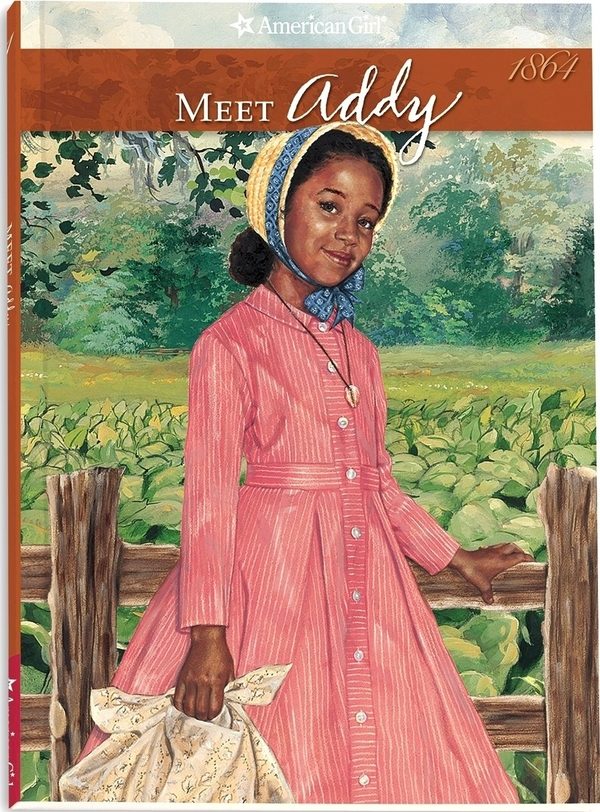
Source: Amazon
6. Meet Samantha
Samantha Parkington lives a life of privilege in the Victorian Era. The only thing that’s gone wrong in her life is that she lost her parents to a boating accident at the age of five, and she is raised by her grandmother and uncle. She is a true product of the Victorian Era, which prioritized progress and inventions.
Samantha Parkington is very curious and asks a lot of questions. Due to her status and privilege, she is quite naive, but learns about injustices around her through her inquisitive nature. She is naturally a selfless person, giving her doll to a poorer friend in need without a second thought. She teaches that even privilege can be used for good.
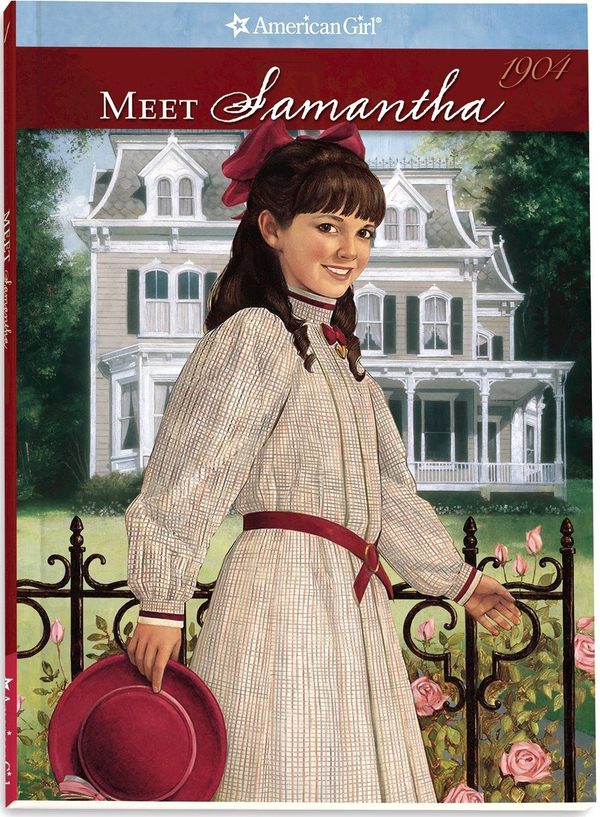
Source: Amazon
7. Meet Kit
Kit Kittredge was born in the Great Depression era, where leisure activities began to really take flight. Americans began to turn to baseball and other hobbies to distract themselves from the economic plunge. Kit’s father loses his job as a result of the era, and her family suffers as a result. Various issues, mostly economic, begin to surface during this time.
Kit is American Girl‘s first budding writer, and she doesn’t take “fake news” for an answer. She is very curious and loves being a mini-reporter, even if the reality is less than pleasant. She is a tomboy at heart and loves baseball; her favorite player is catcher Ernie Lombardi. She fears change, even if she wishes for it, and hates depending on others’ charity.
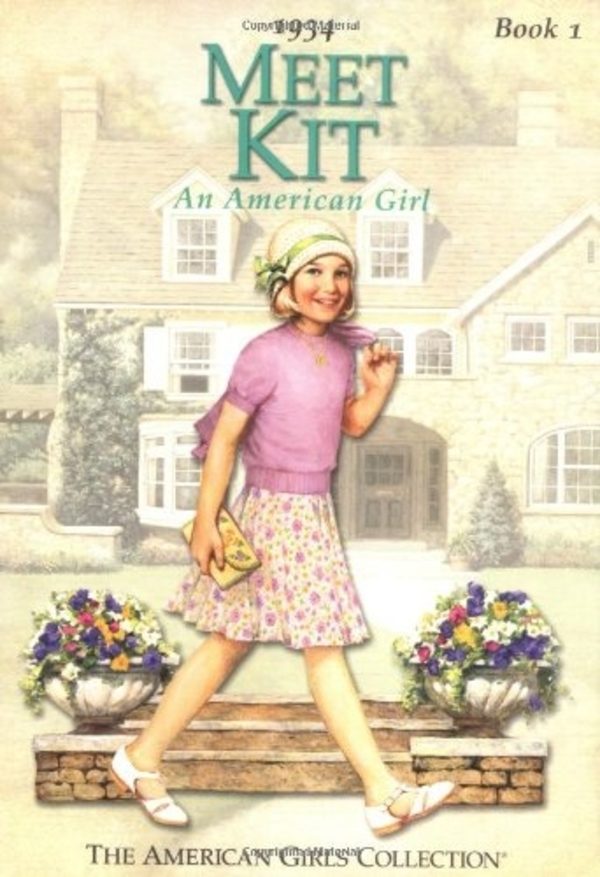
Source: Amazon
8. Meet Molly
Molly McIntyre is a Scottish American living in America during World War II. The books capture how far removed America could be from the war, even with the atrocities happening across the ocean. The only way Molly was affected from the war is that her father was overseas as a medic.
Molly is rather free-spirited and carefree, wanting to live a life of glamour. She is preoccupied with silly things, such as the fact that her hair doesn’t curl naturally. She loves tap dancing, and thrives on pre-teen drama. It’s only when she meets Emily Bennett, who was sent from England in order to protect her from the war, that she realizes how bad it truly is. She begins to focus on the morale of those around her after that.
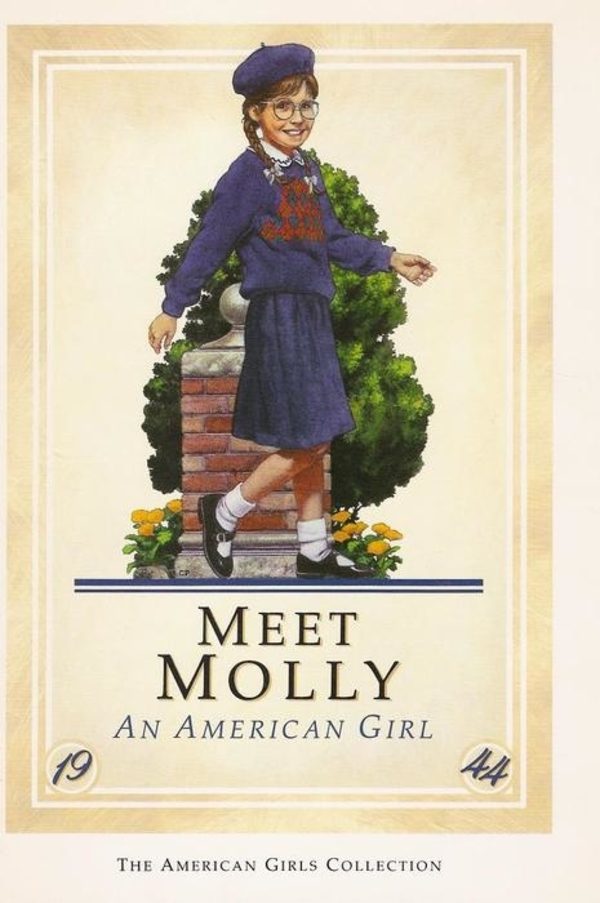
Source: Amazon
What can we take away from the Historical Characters in American Girl? They come from a spectrum of different backgrounds, and these backgrounds should be remembered and celebrated. But they also signify that no matter where we come from, we can find similarities with each other as well. I could relate to each of these girls in at least one period of my life, even though I was born differently and never endured the hardship that a lot of these girls did. (My doll was Samantha.)
American Girl teaches that the answer to discrimination and hatred is not to become ‘colorblind:’ this denies where each of us comes from, and disregards how hard some of us fought to get to this point. But it does teach that we can celebrate our differences and embrace our similarities simultaneously, no matter where we originate.
Who’s your favorite American Girl?
YouTube Channel: CBS This Morning
Featured image via Her Campus
h/t Bustle
